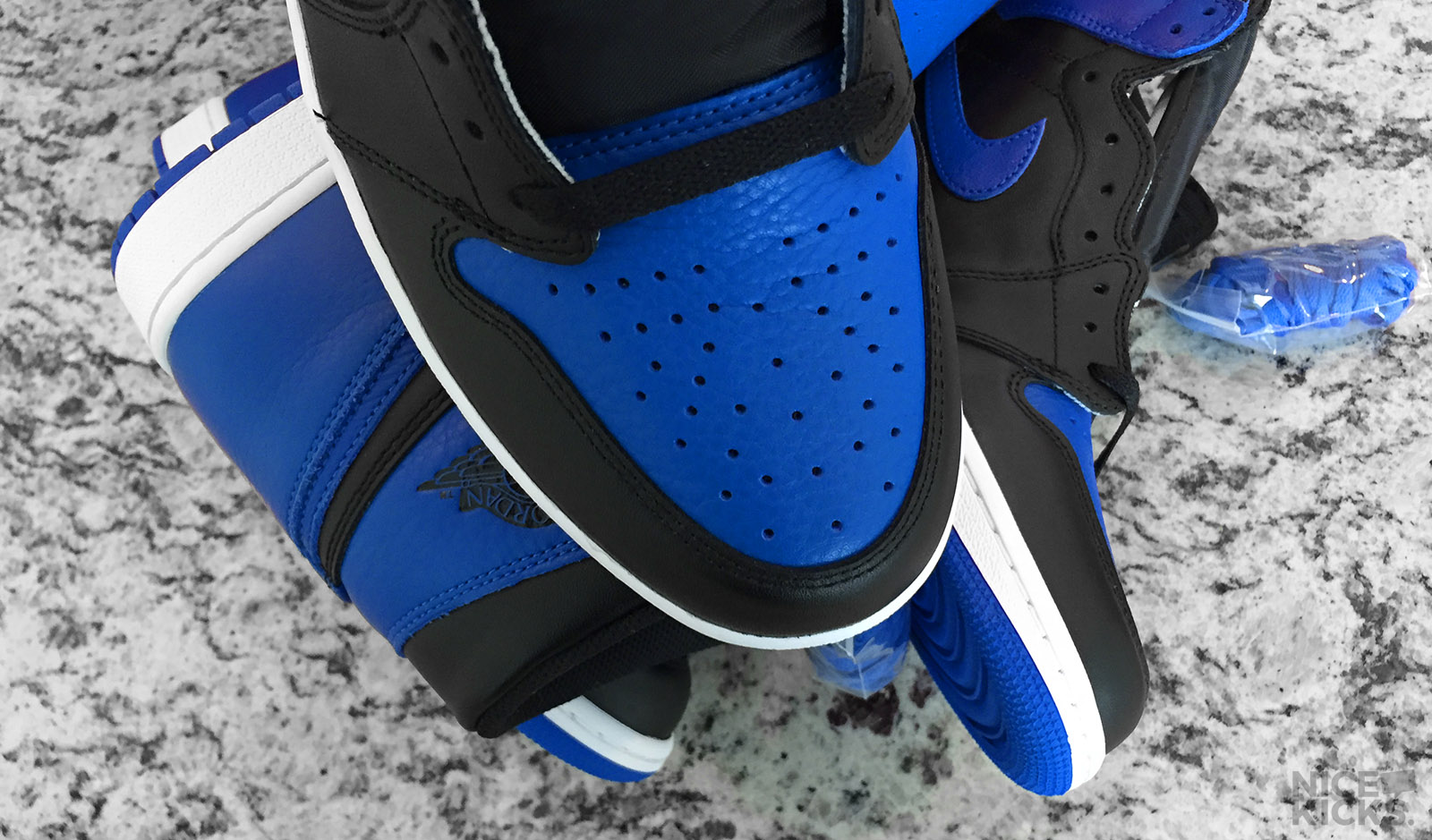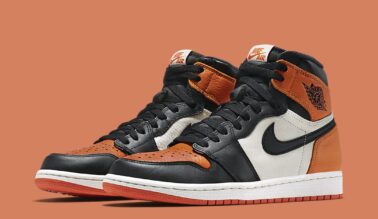This post may contain affiliate links. Please read our disclosure policy.
Last Saturday, the Air Jordan 1 “Royal” returned to much fanfare selling out at stores nationwide to Jordan heads who have patiently waited four years for a return and a remastered version of the OG colorway. By mid-day, there was some conversation on twitter about the differences in leathers used on the toe boxes of the remastered retro Royals.
Some pairs had a tumbled toe on the left side with smooth leather on the right. Others had smooth leather on the left while the right toe was tumbled leather. And then, of course, some pairs have smooth on both left and right. Slight variances are to be expected when there are literally hundreds of thousands of pair produced of the shoe, especially when dealing with a natural material like leather, but when we received two pairs in the mail today, we observed differences that extended beyond just the grain or grade of leather.
Two pairs were obtained, and surely enough, we quickly spotted differences between not only the two sides of the pair, but the two pairs were noticeably different. Before we get deep into the comparisons of each side of each pair, let’s first establish what we already do know about each – where they were produced and when they were assembled.
On the tag inside a pair of shoes from Nike there is not only the size listed in several different regional measurements, but also lots of other information including the product number, SKU, factory where the shoes were produced, and the production dates.
Both pairs we obtained were the same size, the same model, and were assembled in the same factory, but what made them uniquely different was their production date.
For the sake of simplicity, we will refer to each shoe by their production date – 12/13 and 12/29.
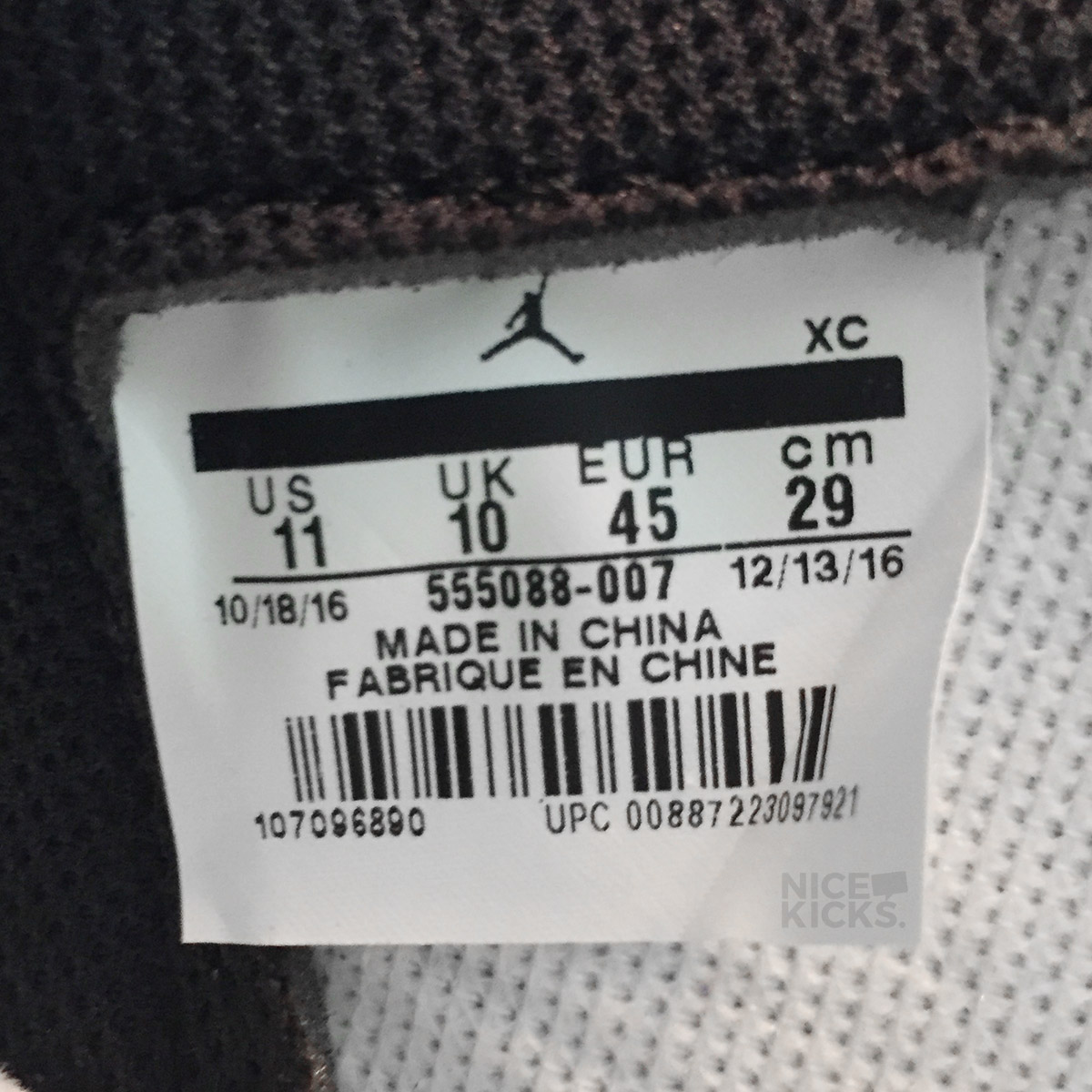
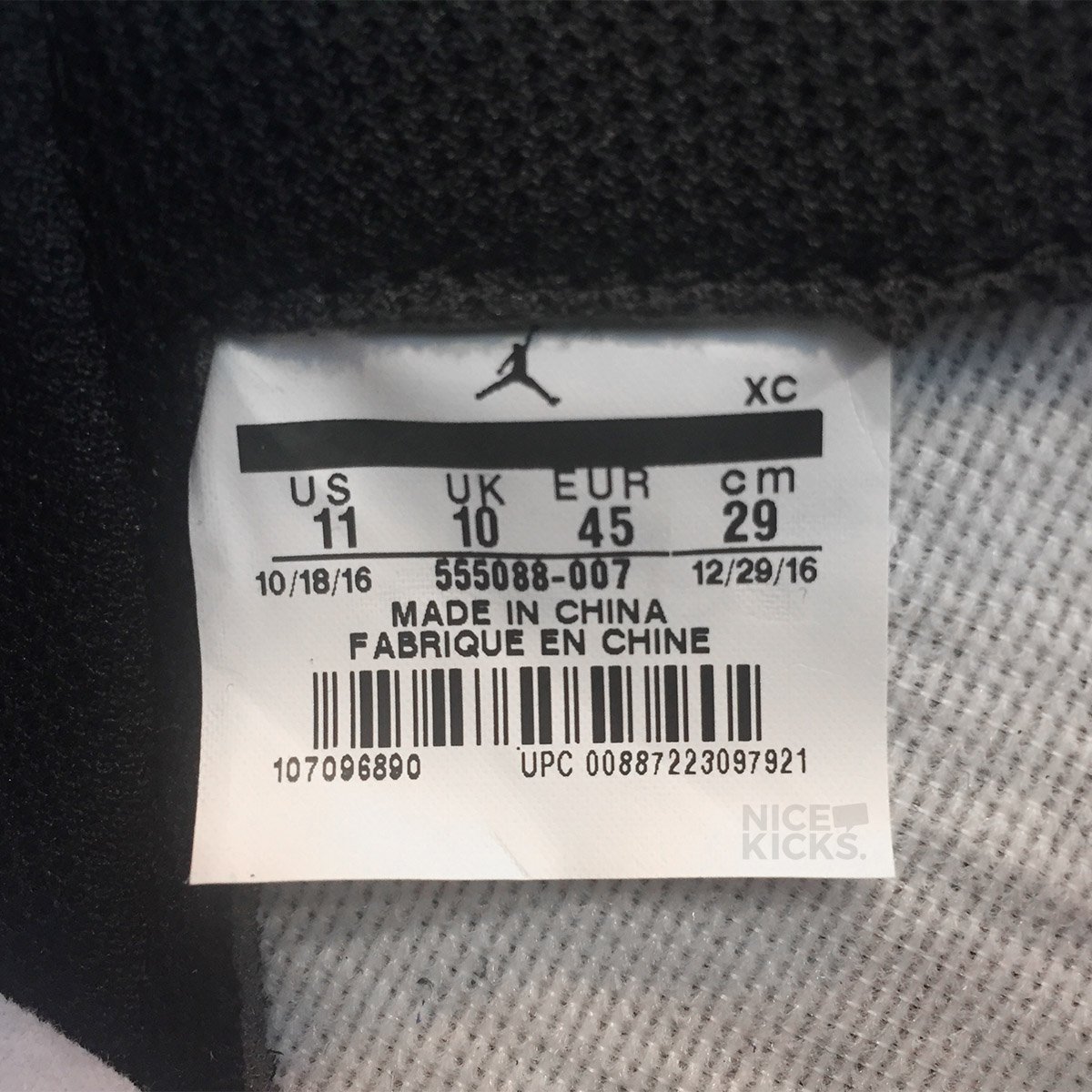
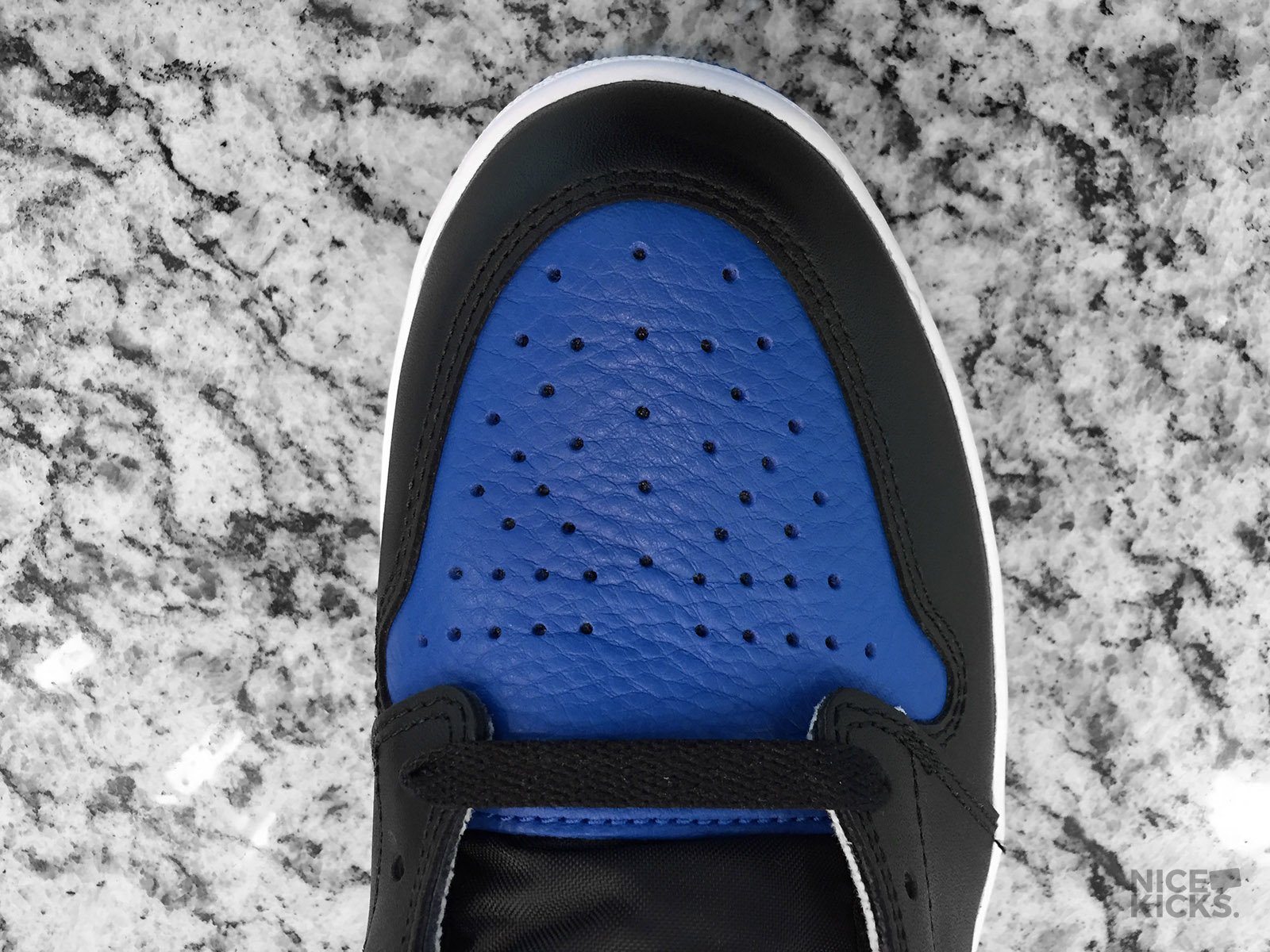
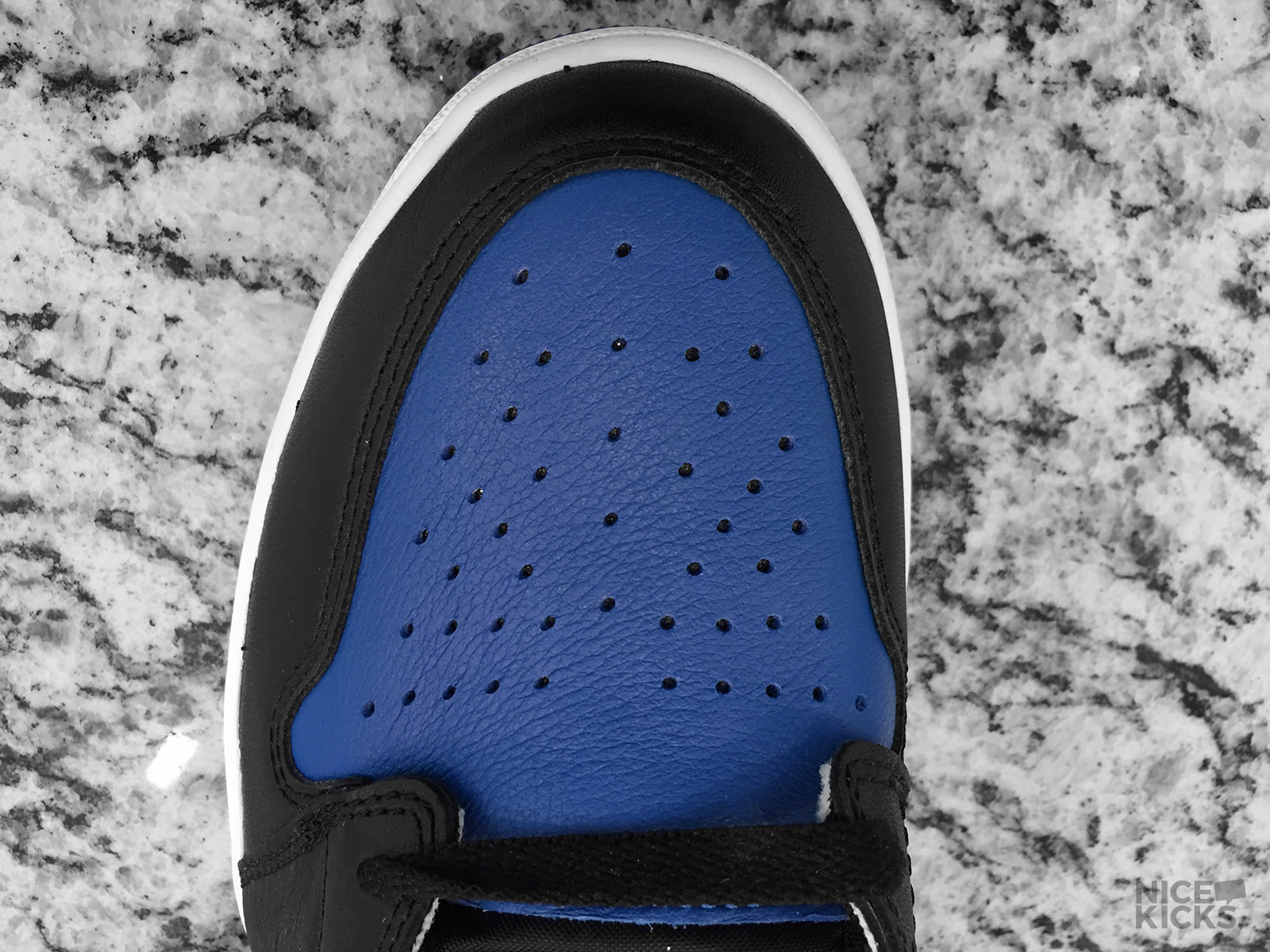
But what shocked me more than the clear differences between the grains, texture, and softness was something beyond the variable of natural materials – it was the manufactured process of perforations. As you can clearly see below the perforations not only have a slightly different offset and pattern, but also the shape and size of the holes.
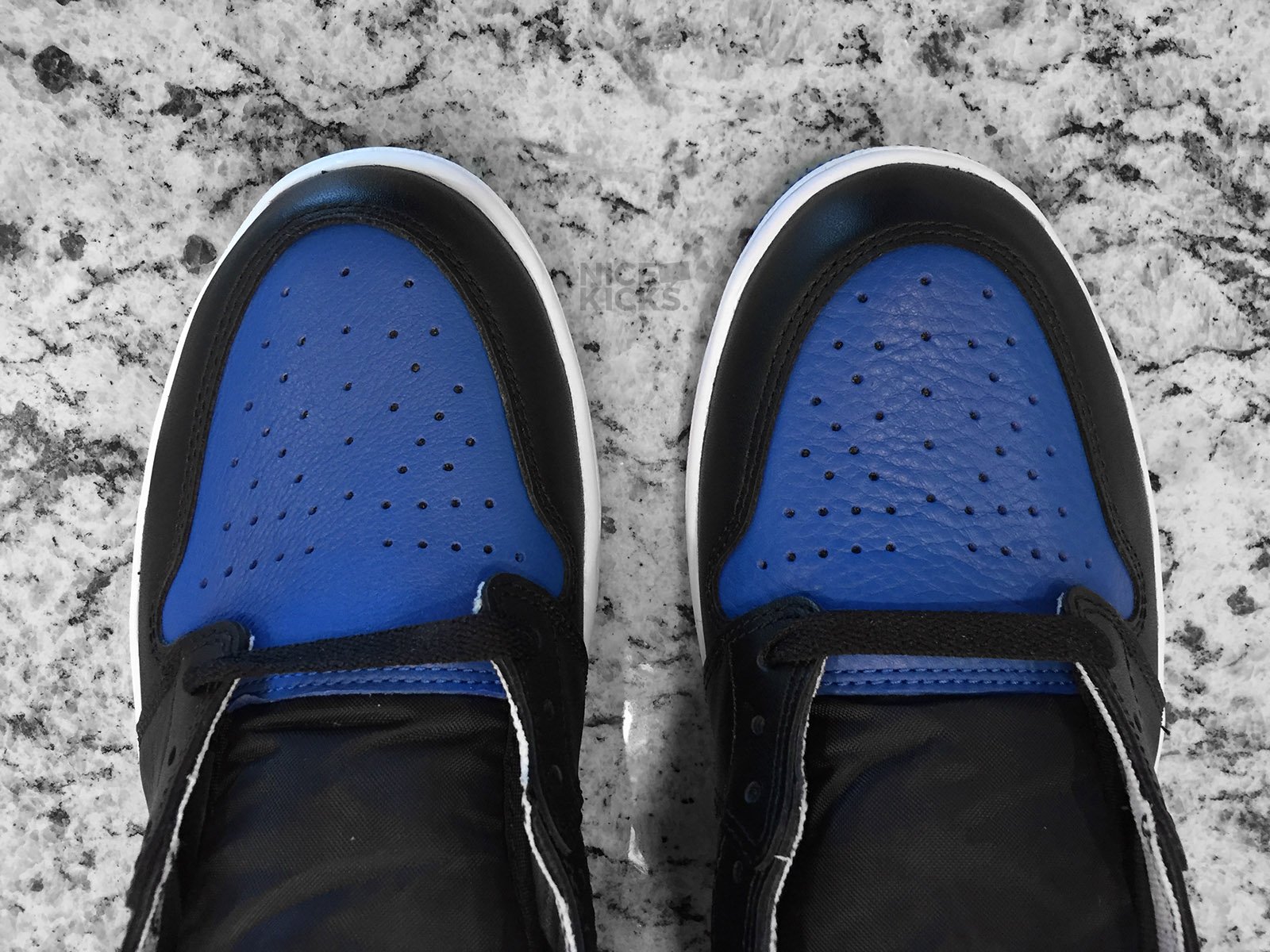
At the time that I opened the second box of Royals, I had no knowledge of there being a different production date. I had heard of discrepancies online, but no one had ever brought up the production dates before when comparing their different pairs. Sure enough, when I opened the second pair there were some differences between the left and right foot, but not nearly as noticeable as the first. This pair, what I will refer to as the 12/29 pair, is shown below.
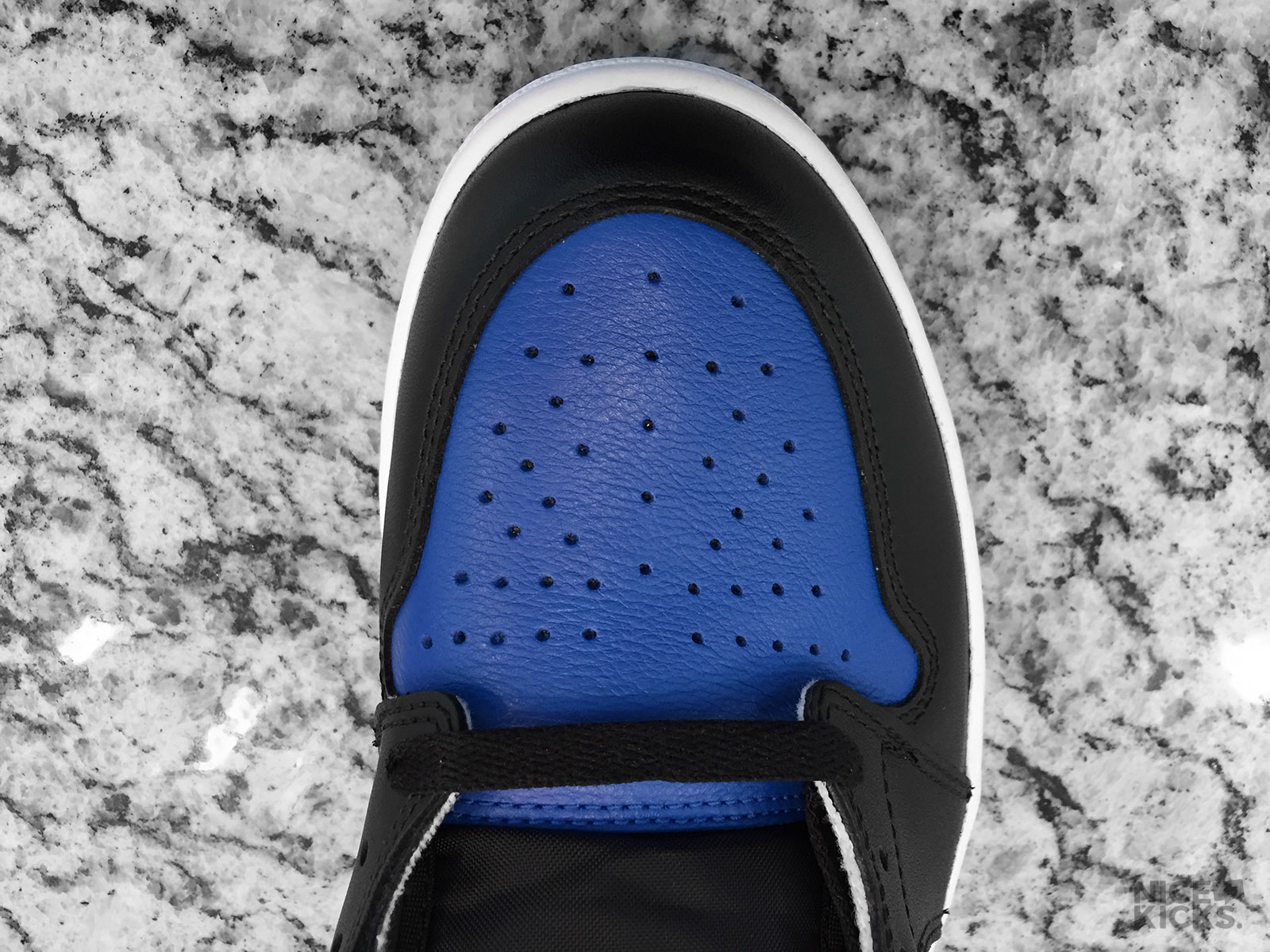
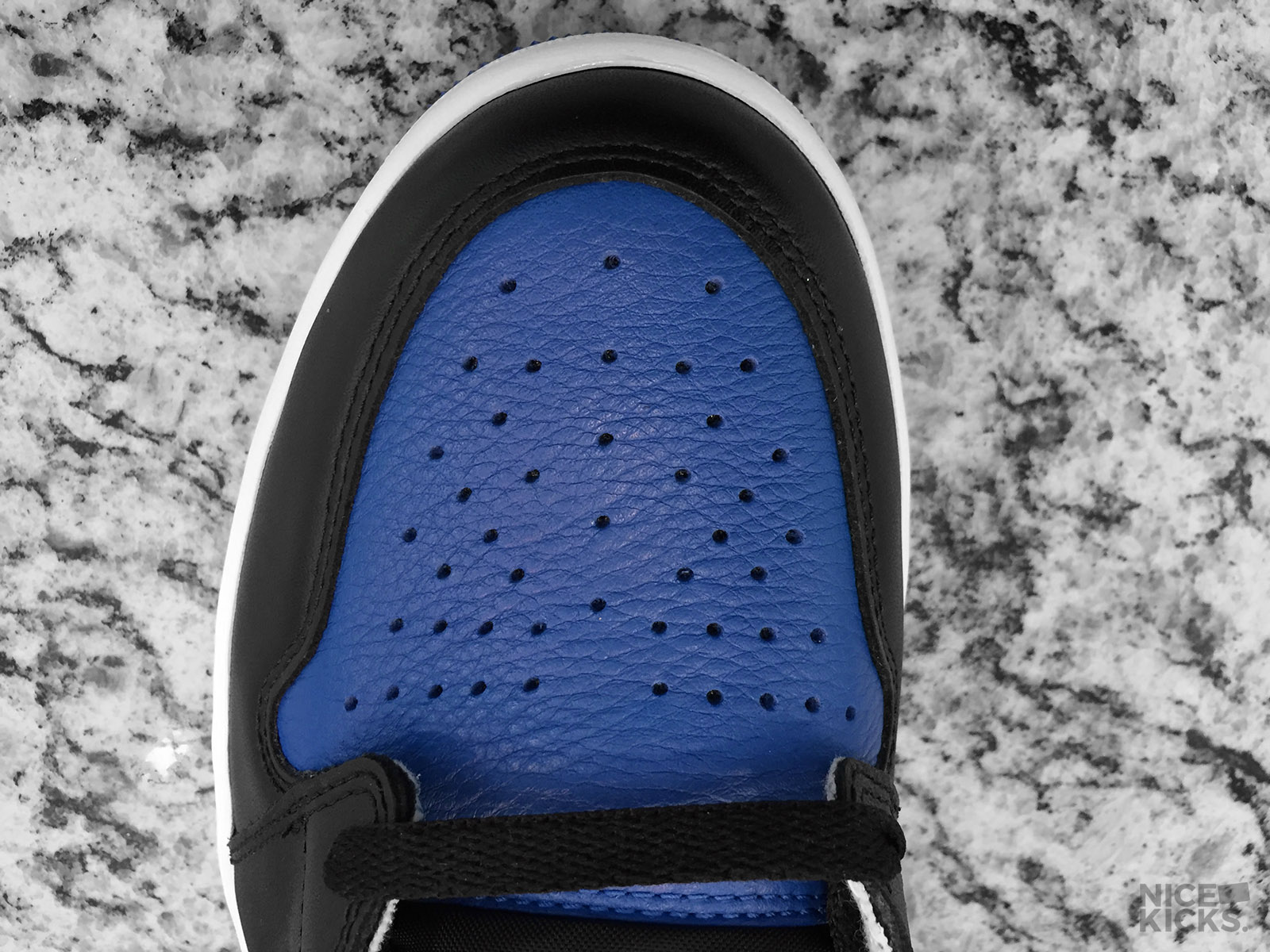
As you can see, the grains of the leather are closer to one another, but still with some slight variance. Lastly, to illustrate another difference, look below at a photo of showing the two sides of the 12/29 pair side by side where you can see once again a difference in the pattern and shape of the perforations of the toe box.
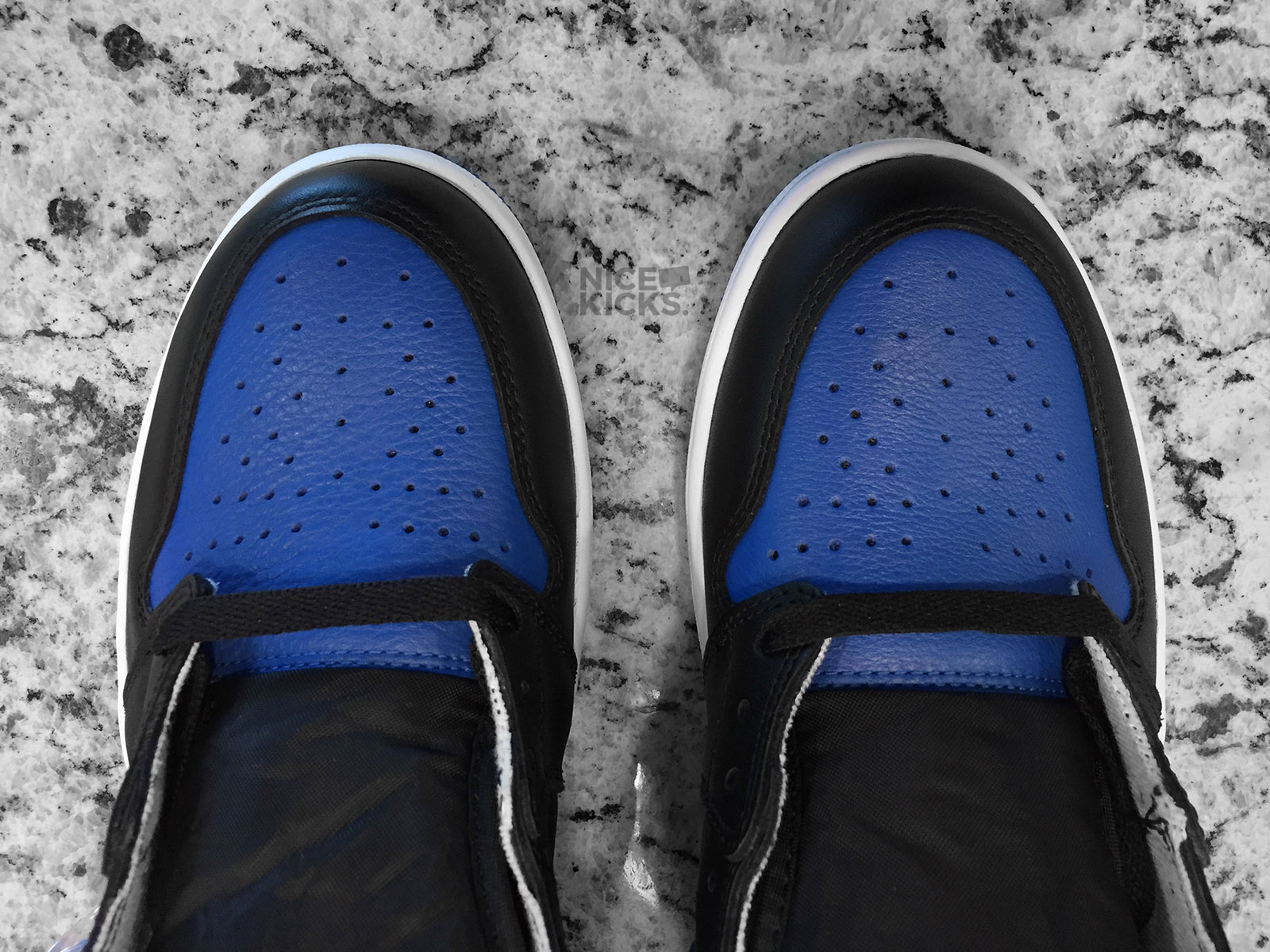
In the past couple of days, many customers have displayed inconsistencies with their shoes as well. Many pairs that were ordered online on Nike’s SNKRS app started arriving at customer’s doorsteps on Wednesday and Thursday.
I think it’s important for both sellers & buyers to understand that the Jordan 1 “Royal” features both tumbled and smooth leather, randomly
— Stringer Bell (@xblaze23) April 4, 2017
My Royal 1s came in today from the SNKRS app. One toe box is tumbled the other is not. I expect more from @nikestore pic.twitter.com/11ILhb5qlj
— Jesse (@Jess_martinez03) April 6, 2017
@SoleCollector @SneakerNews @nikestore Are Jordan 1 “Royal” pairs supposed to have smooth or tumbled leather? my SINGLE PAIR has both pic.twitter.com/AzNKh7goYa
— Jeremy K (@JKlubzMIA) April 4, 2017
There is a lot that can be learned from this situation for consumers. The first is that despite all efforts any brand can make to keep quality consistent across all shoes when producing to the scale of the major release like this one, it is next to impossible to have every pair be equal. Next, if you are purchasing on the secondary market, it is important to ask the seller to provide you photos of the shoes that you will be purchasing. As we could tell from different production times and production runs, shoes can have noticeable differences between them even if they are the same SKU, product number, size, even if they are produced in the same factory. Lastly, when purchasing products in person at retail stores, take the opportunity to open the box and check your pair before you purchase.
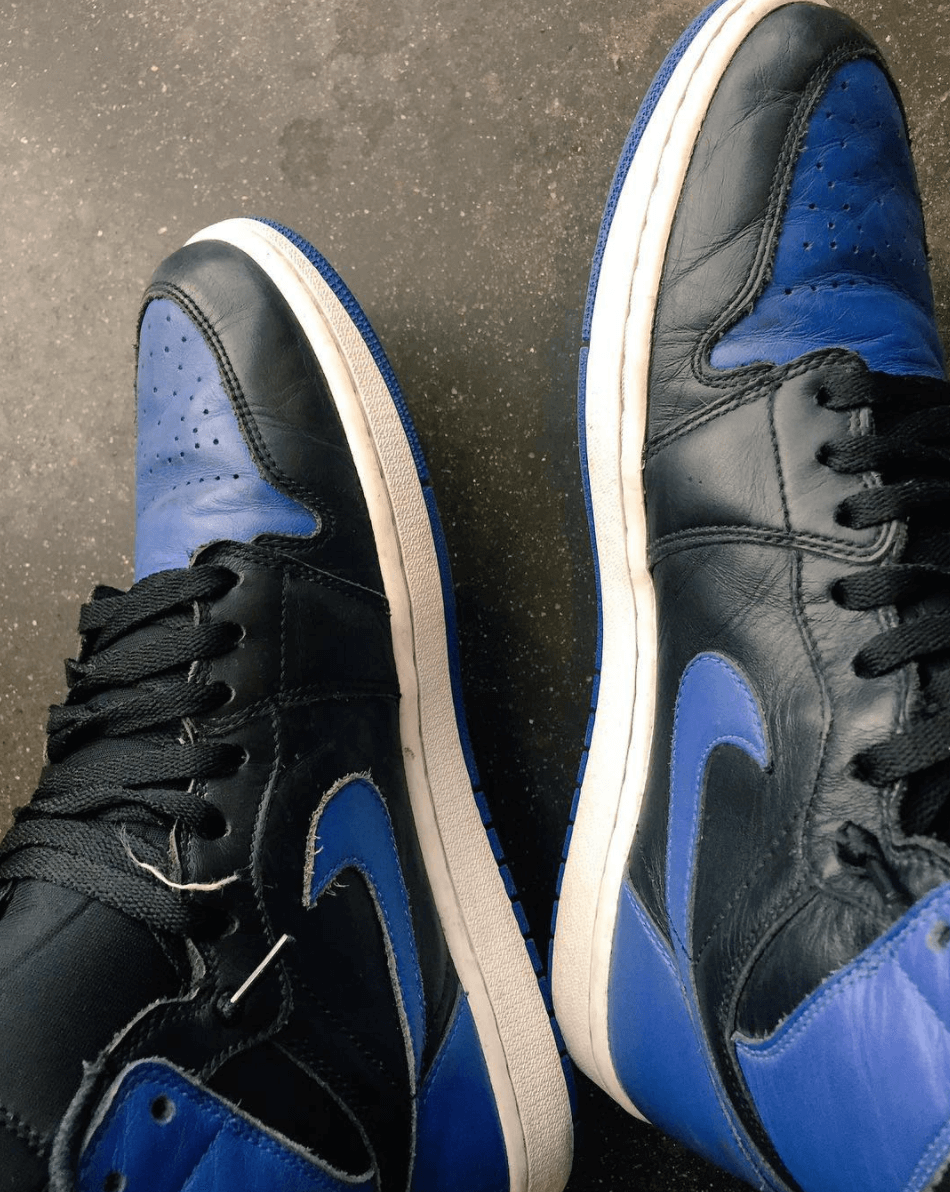
In closing, there is a little bit of disappointment that my pairs were slightly off, but make no mistake about it, I am very happy to be able to retire my 2013 Royals and start a new chapter with these. This piece was written purely to show what I personally discovered with my pairs that I purchased from Nike and another Nike retailer and in no way to discourage anyone from buying the shoes. (Sorry, but they’re all sold out everywhere if you hadn’t already heard.)
